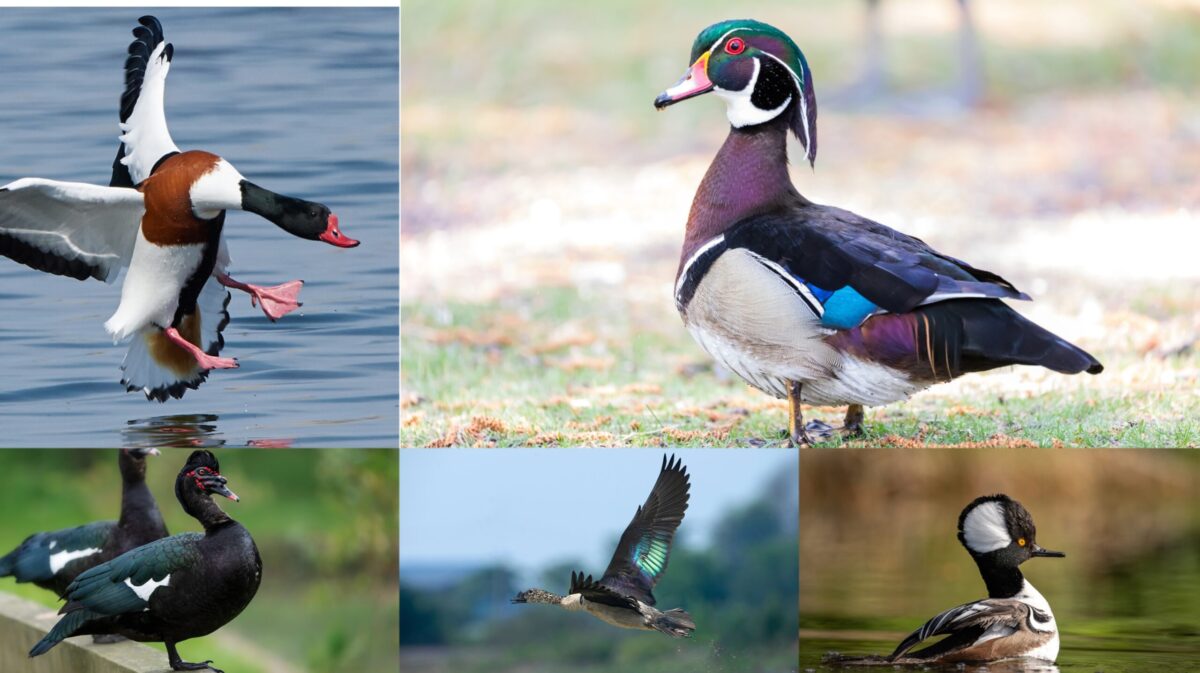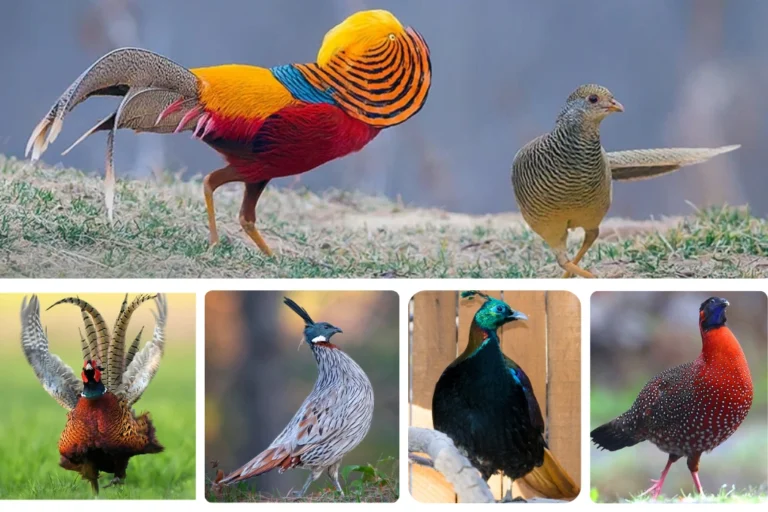10 of the Most Beautiful Ducks
Ducks are more than just pond dwellers and quacking creatures; they are some of the most beautiful birds in the avian world. Their vibrant plumage, graceful movements, and diverse habitats make them a favorite among birdwatchers, duck lovers, and nature enthusiasts alike. In this listicle, we’ll explore 10 of the most beautiful ducks from around the globe, each one a masterpiece of nature. Get ready to be captivated by their colors, patterns, and unique characteristics.
Explore 10 Most Beautiful Ducks Around the Globe
1. The Mandarin Duck: A Living Watercolor

The Mandarin Duck is often hailed as one of the most beautiful ducks in the world. With its vibrant colors and striking patterns, this duck looks like a living watercolor painting. Males are particularly eye-catching with their bright orange “sails” on their backs and intricate facial patterns.
Physical Description
The male Mandarin Duck boasts spectacular colors, including deep blues, oranges, purples, and greens. Its face features a combination of white and rich brown feathers with intricate markings. The females, while more subdued, have a graceful appearance with shades of gray and white speckled feathers.
| Name & Family | Mandarin Duck (Aix galericulata) |
|---|---|
| Lifespan | 6-10 years |
| Size | 16-19 inches |
| Habitat | Lakes, marshes, ponds |
| Diet | Seeds, plants, insects, small fish |
| Conservation Status | Least Concern |
| Social Behavior | Mostly monogamous, often found in pairs |
2. The Wood Duck: North America’s Most Colorful

Native to North America, the Wood Duck is another stunning example of nature’s artistry. Its iridescent plumage and unique patterns make it one of the most colorful ducks on the continent.
Physical Description
Male Wood Ducks display an iridescent mix of greens, blues, and purples on their heads, coupled with bold white stripes. Their bodies are adorned with rich chestnut and buff colors. Females are more muted with gray-brown feathers and white eye rings, adding a subtle beauty.
| Name & Family | Wood Duck (Aix sponsa) |
|---|---|
| Lifespan | 3-4 years |
| Size | 19-21 inches |
| Habitat | Wooded swamps, marshes, streams |
| Diet | Seeds, fruits, insects, small aquatic animals |
| Conservation Status | Least Concern |
| Social Behavior | Known for nesting in tree cavities |
3. The Paradise Shelduck: New Zealand’s Gem
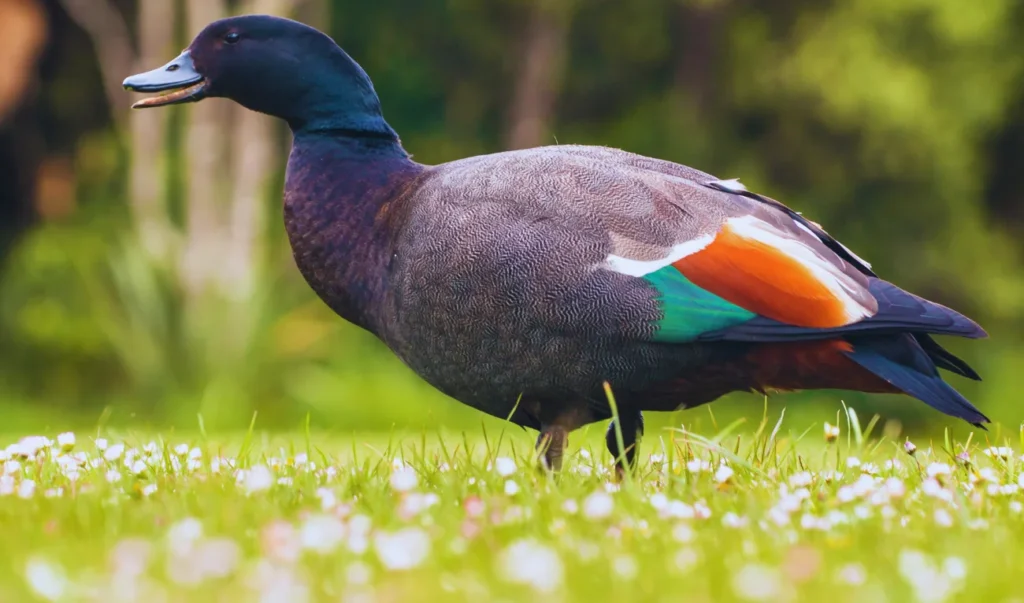
The Paradise Shelduck, native to New Zealand, is a captivating bird with contrasting plumage and distinctive call. It is one of the country’s most recognizable bird species.
Physical Description
Males and females exhibit sexual dimorphism. Males have a predominantly black body with a greenish sheen, while females display white heads and chestnut bodies. This striking contrast makes them easy to identify.
| Name & Family | Paradise Shelduck (Tadorna variegata) |
|---|---|
| Lifespan | 8-10 years |
| Size | 24-29 inches |
| Habitat | Grasslands, wetlands, farmlands |
| Diet | Grasses, aquatic plants, invertebrates |
| Conservation Status | Least Concern |
| Social Behavior | Often found in pairs or small flocks |
4. The Northern Pintail: The Sleek and Elegant
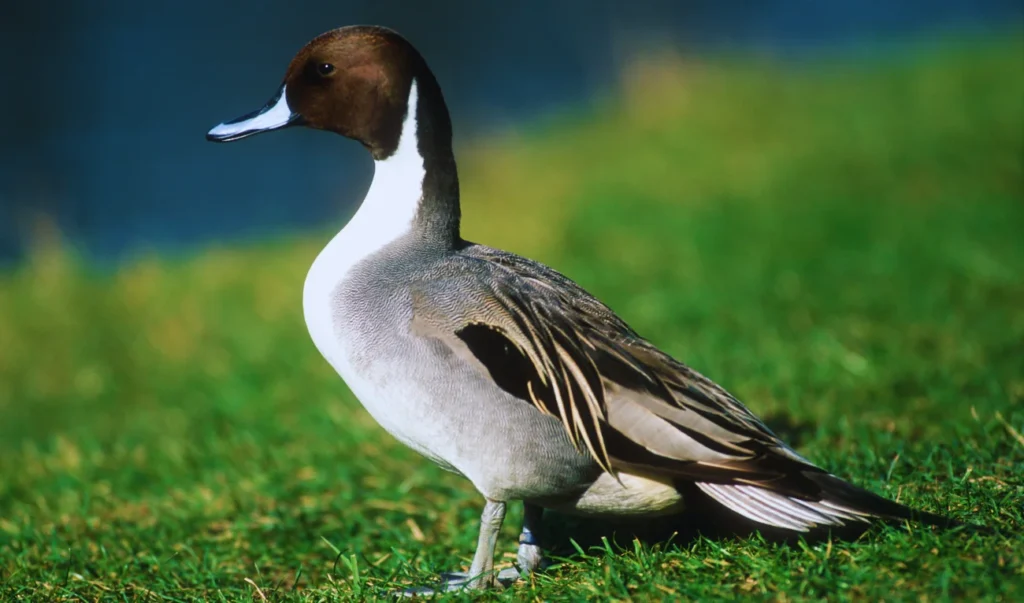
The Northern Pintail is known for its sleek and elegant appearance. With its long neck and graceful demeanor, it is a favorite among birdwatchers.
Physical Description
Males have a chocolate-brown head and a white stripe extending from the neck to the belly. Their long, pointed tail feathers are a distinguishing feature. Females are mottled brown with a more understated elegance.
| Name & Family | Northern Pintail (Anas acuta) |
|---|---|
| Lifespan | 15-20 years |
| Size | 20-30 inches |
| Habitat | Marshes, lakes, estuaries |
| Diet | Seeds, aquatic plants, insects |
| Conservation Status | Least Concern |
| Social Behavior | Often seen in large migratory flocks |
5. The Cape Shoveler: Africa’s Beautiful Shoveler Duck
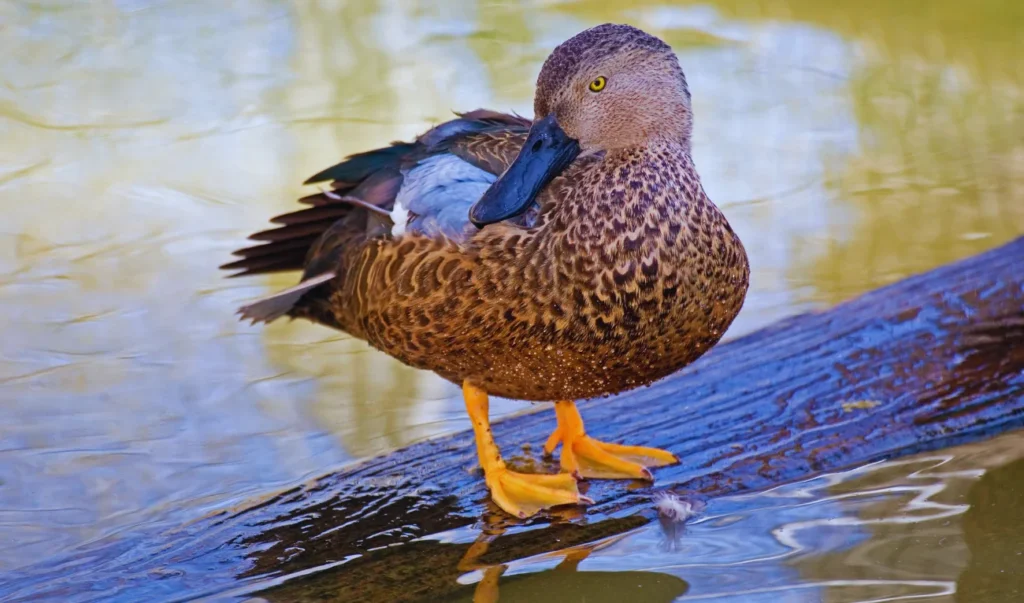
Native to Africa, the Cape Shoveler is a unique and beautiful duck known for its large, spatula-shaped bill. This feature makes it an expert at filtering food from water.
Physical Description
Both males and females have mottled brown plumage, but the male’s bill is a distinctive blue-gray color. Their eyes are striking yellow, adding a pop of color to their overall appearance.
| Name & Family | Cape Shoveler (Spatula smithii) |
|---|---|
| Lifespan | 10-12 years |
| Size | 20-23 inches |
| Habitat | Freshwater lakes, marshes, coastal lagoons |
| Diet | Aquatic invertebrates, seeds, plant matter |
| Conservation Status | Least Concern |
| Social Behavior | Typically seen in pairs or small groups |
6. The Harlequin Duck: The Colorful Sea Diver
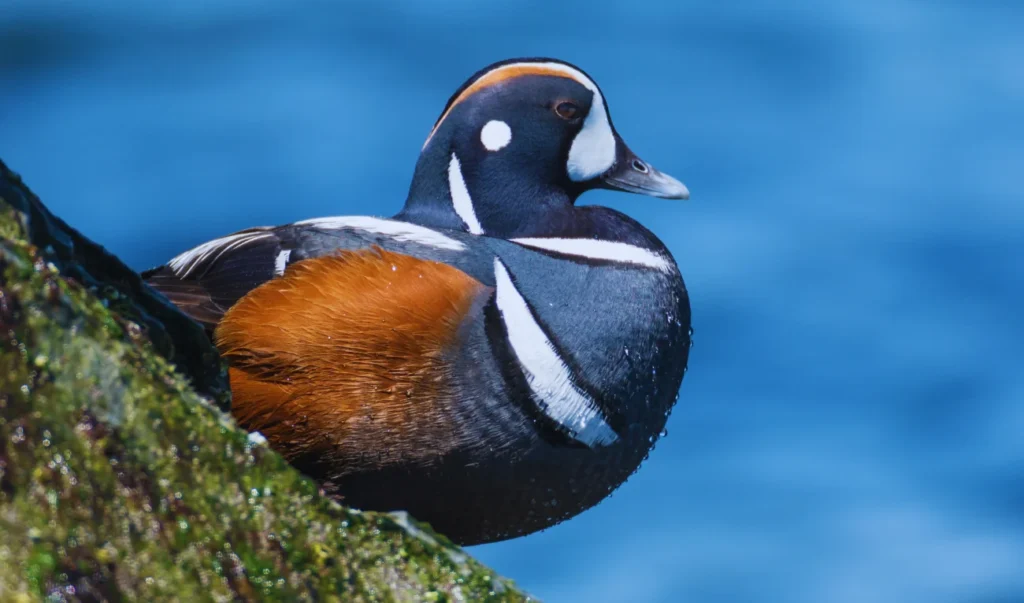
Known for its vibrant and distinctive markings, the Harlequin Duck is a true spectacle among waterfowl. Native to the rocky shores of North America and Greenland, this duck is both a feast for the eyes and an impressive swimmer.
Physical Description
Males boast an intricate pattern of white bars and spots set against a backdrop of blue, chestnut, and black feathers. Females, more subdued in appearance, have chocolate-brown plumage with distinctive white markings around their eyes.
| Name & Family | Harlequin Duck (Histrionicus histrionicus) |
|---|---|
| Lifespan | 12-15 years |
| Size | 14-18 inches |
| Habitat | Rocky coastal waters, fast-flowing streams |
| Diet | Aquatic invertebrates, small fish |
| Conservation Status | Least Concern |
| Social Behavior | Often found in small groups or pairs |
7. The Spectacled Eider: The Arctic Beauty
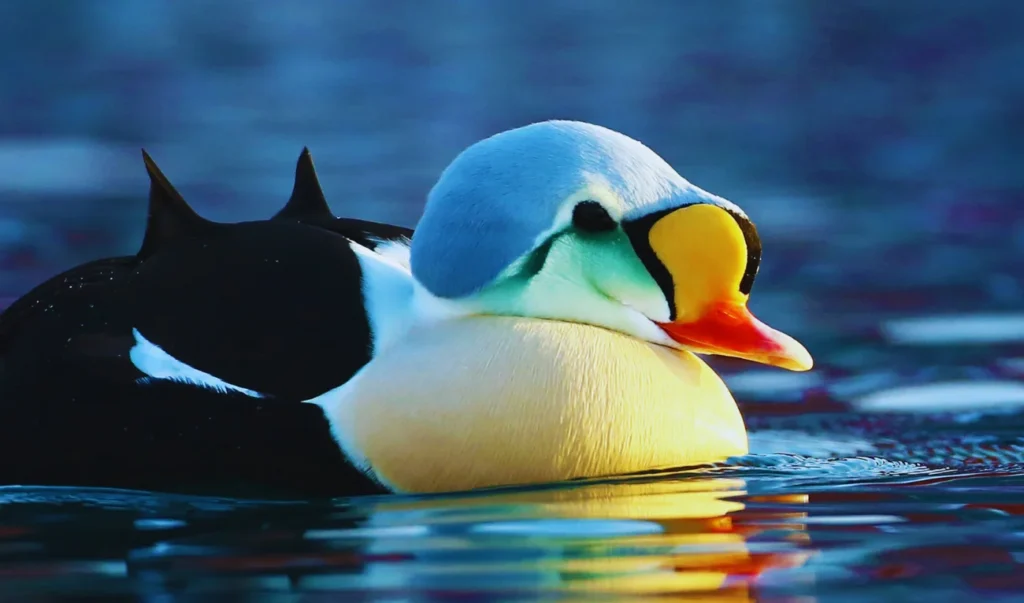
The Spectacled Eider is an eye-catching bird found in the Arctic region. Its unique “spectacled” appearance and winter ice floe habitat make it a fascinating subject for bird enthusiasts.
Physical Description
Males are adorned with striking black, white, and green plumage, along with distinctive white “spectacles” around their eyes. Females are more camouflaged with brown and black feathers.
| Name & Family | Spectacled Eider (Somateria fischeri) |
|---|---|
| Lifespan | 20 years |
| Size | 20-22 inches |
| Habitat | Arctic tundra, coastal waters, ice floes |
| Diet | Mollusks, crustaceans, aquatic insects |
| Conservation Status | Near Threatened |
| Social Behavior | Forms large flocks during migration |
8. The Common Shelduck: Europe’s Vibrant Beauty

Found across Europe and Asia, the Common Shelduck stands out with its strong coloration and elegant form. It is a familiar sight in estuaries and coastal wetlands.
Physical Description
Displaying a bold color palette, the male and female Common Shelduck feature a distinctive chestnut band across their white bodies, with a blackish-green head and neck. Both sexes look similar, though males are slightly larger.
| Name & Family | Common Shelduck (Tadorna tadorna) |
|---|---|
| Lifespan | 10-12 years |
| Size | 22-24 inches |
| Habitat | Estuaries, mudflats, coastal marshes |
| Diet | Invertebrates, small fish, aquatic plants |
| Conservation Status | Least Concern |
| Social Behavior | Seen in large flocks, especially during migration |
9. The Baikal Teal: Asia’s Dazzling Gem

Native to East Asia, the Baikal Teal is a stunning bird known for its intricate and colorful plumage. This duck is often regarded as one of the most beautiful waterfowl species.
Physical Description
Males are adorned with a striking pattern of green, yellow, and white on their heads, along with a reddish-brown chest and speckled flanks. Females with mottled brown feathers and a distinctive facial pattern are more understated but equally attractive.
| Name & Family | Baikal Teal (Sibirionetta formosa) |
|---|---|
| Lifespan | 10-15 years |
| Size | 14-16 inches |
| Habitat | Lakes, marshes, river deltas |
| Diet | Seeds, aquatic plants, invertebrates |
| Conservation Status | Least Concern |
| Social Behavior | Often found in flocks during winter |
10. The Australian Wood Duck: The Graceful Grazer
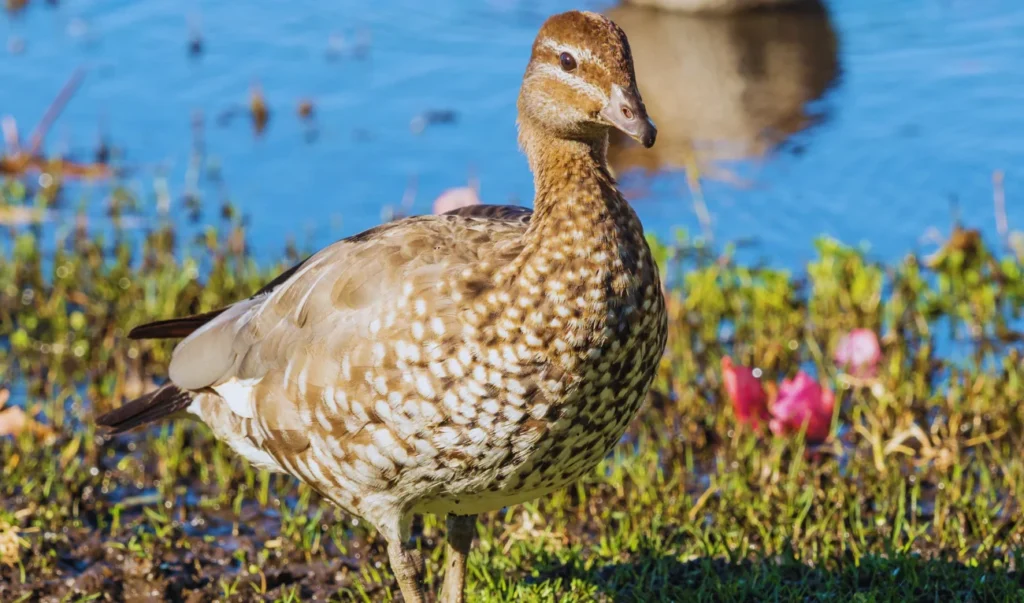
Commonly found in Australia, the Australian Wood Duck is known for its graceful demeanor and attractive appearance. It is one of the most beautiful ducks I have ever encountered. It is often spotted grazing in fields and shallow waters.
Physical Description
Males have a grey body with a distinct chestnut-brown head and a white patch on the wings. Females are similar but have a lighter, more mottled body and a distinctive stripe above and below the eye.
| Name & Family | Australian Wood Duck (Chenonetta jubata) |
|---|---|
| Lifespan | 10-15 years |
| Size | 18-20 inches |
| Habitat | Grasslands, freshwater lakes, rivers |
| Diet | Grasses, plants, small aquatic animals |
| Conservation Status | Least Concern |
| Social Behavior | Typically found in small groups |
Conclusion
From the vibrant Mandarin Duck to the elegant Northern Pintail, each of these beautiful ducks showcases nature’s incredible diversity and splendor. Whether you’re a seasoned birdwatcher or just someone who appreciates wildlife’s beauty, these ducks will surely captivate your heart.
